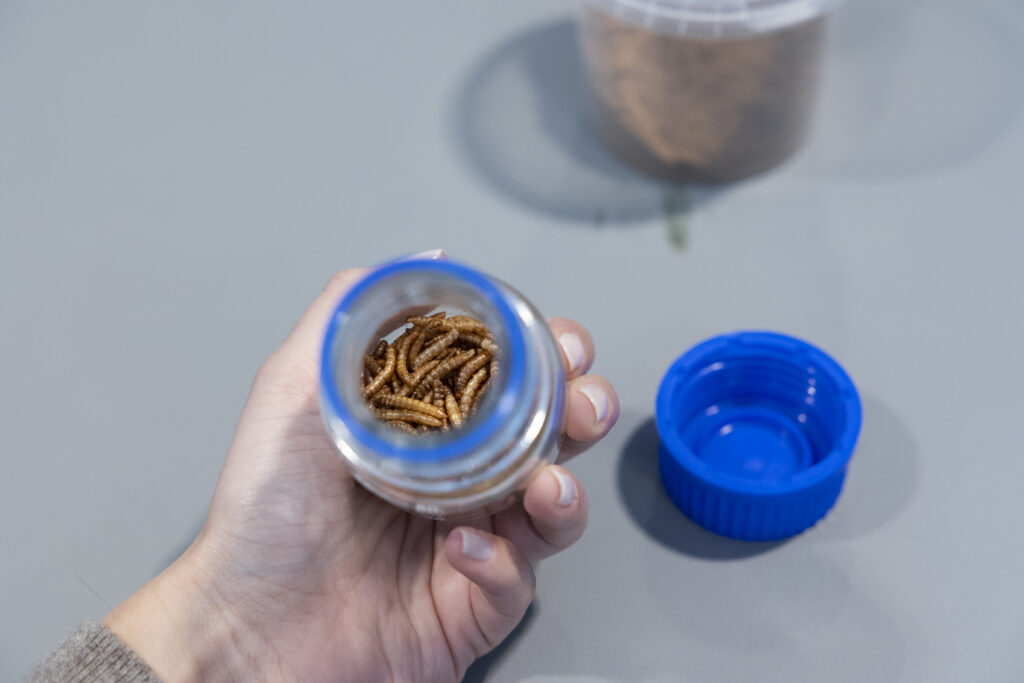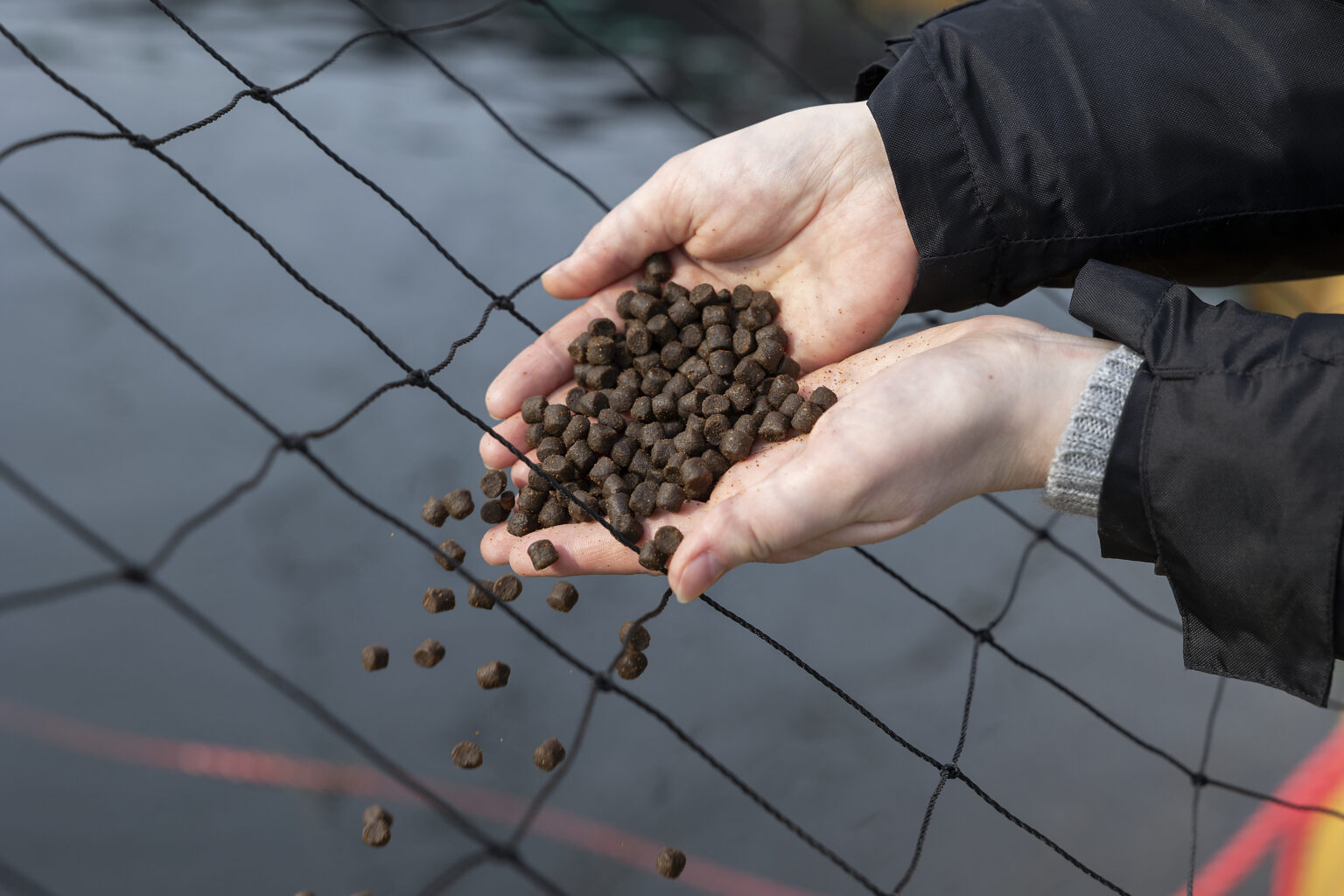Photo: Silje K. Robinson
What do the salmon eat today?
Now, the feed-menu mainly consists of plant-based resources, with soy being the dominant ingredient. Most of it originates from outside our boarders and Norway imported 92 % of the 1,92 million tons of the ingredients to salmon feed in 2020. Well below 1 % of the total ingredients are categorized as novel ingredients.
Despite numerous efforts, the need for sustainable novel feed ingredients is larger than ever before. According to existing knowledge, there are a lot of possible ingredients. Raw material can be categorized into marine resources, farmed organisms and underutilized resources.
Novel marine ingredients
Harvested ingredients from the sea might be a realistic source for salmon feed in the future. Mesopelagic fish, Calanus finmarchicus (a plankton organism) and krill are mentioned as possible resources.
Novel marine ingredients are promising. They are excellent protein and marine oil resources and because of our strong experience with fishery, Norway has an advantage when it comes to efficient harvesting and processing. Also, it is likely that it exists big volumes for all species in our areas in the North Atlantic Sea.
But alas, there are some significant barriers as well, and more research and development remains before they could be sources of significance. In the long run, they have potential, but not as of today.
Farmed organisms
Among farmed organisms, there are some interesting possibilities. Insects, blue mussels, seaweed, bacteria, fungus, and photoautotrophic microalgae are among the possible alternatives.

Insects, for example, could become a valuable future ingredient. They are already a natural part of the diet for wild salmon, and some species have been allowed in fish feed in EU and Norway since 2017. Insects have a high composition of protein and can contribute to a circular food system by upcycling waste.
Photo: Silje K. Robinson
Today, one of the barriers for this, is a regulation for organic waste as feedstock. Legislations require larvae to be fed with plant-based products, with a few exceptions for animal ingredients. For example, sludge and waste could be valuable feedstocks, but are currently not allowed.
Underutilized resources
There are also some other existing ingredients which are not utilized yet. By-products from aquaculture, animals like poultry and pork or marine animals like whitefish and pelagic fish could be used as feed ingredients.
For example, the strengths of leftovers from land-based animal are, among others, that we have a lot of it, and they contribute to a circular food system. However, there are also some barriers when it comes to market acceptance and heat treatment. For example, will too much heat reduce nutritional quality.
More details in an upcoming report
All of the possible novel feed ingredients mentioned above are covered by the industry insight future feed ingredients report we will publish October 27th. There are a lot of interesting ingredients, and more details regarding strengths and barriers can be found in the report.
The report will, among other things, provide more insight in blue mussels, by-products from land animals and photoautotrophic microalgae, which all have a significant potential by 2030.
